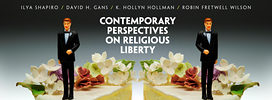Lead Essay
Ilya Shapiro reviews recent U.S. Supreme Court cases on religious liberty and examines how each of them is the product of government intrusion into civil society - into areas of life that, while public, are nongovernmental. These include organized religions, businesses, and private civic and social groups. These institutions of civil society do much good work, and Americans of all political persuasions are increasingly aware that they are under attack. We are brought into needless conflict with one another, Shapiro writes, whenever the government decrees how these institutions must conduct themselves with regard to matters of conscience.
Response Essays
David H. Gans draws our attention away from the Free Exercise Clause and toward the Establishment Clause. A ban on travel from overwhelmingly Muslim countries - and not on travel from others - constitutes an official disfavor, he argues, particularly in light of the clear statements that have been made about the ban’s intent. The greatest threat to religious liberty today is the threat to the religious liberty of Muslims. Meanwhile, he argues, religious exemptions to general laws are often of doubtful legality and tend to threaten the liberties of those whom they do not single out for protection.
Religious liberty is protected in two ways in our Constitution: First, the government may not establish any religion, nor may it officially disfavor any; and second, individuals’ free exercise is also protected. K. Hollyn Hollman urges us to reject too-simple narratives about religious liberty and government interference, though, because the politicization of religious liberty is itself a danger to religious liberty. Political point-scoring makes workable compromises harder to find.
Robin Fretwell Wilson issues a call for compromise in today’s battles over the Establishment Clause. There can be no expectation that either the religiously observant, or those to whom they object, will disappear from our society anytime soon. And yet life must go on. Compromise is not such an unreasonable thing to expect, she argues, because all have a vested interest in finding ways to live together despite their differences.
Related at Cato
Legal Brief:Trinity Lutheran Church vs. Pauley, by Ilya Shapiro, Trevor Burrus, and Jayme Weber. April 21, 2016.
Conference: Protecting Religious Liberty, June 14, 2016

